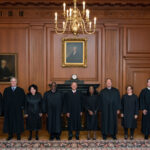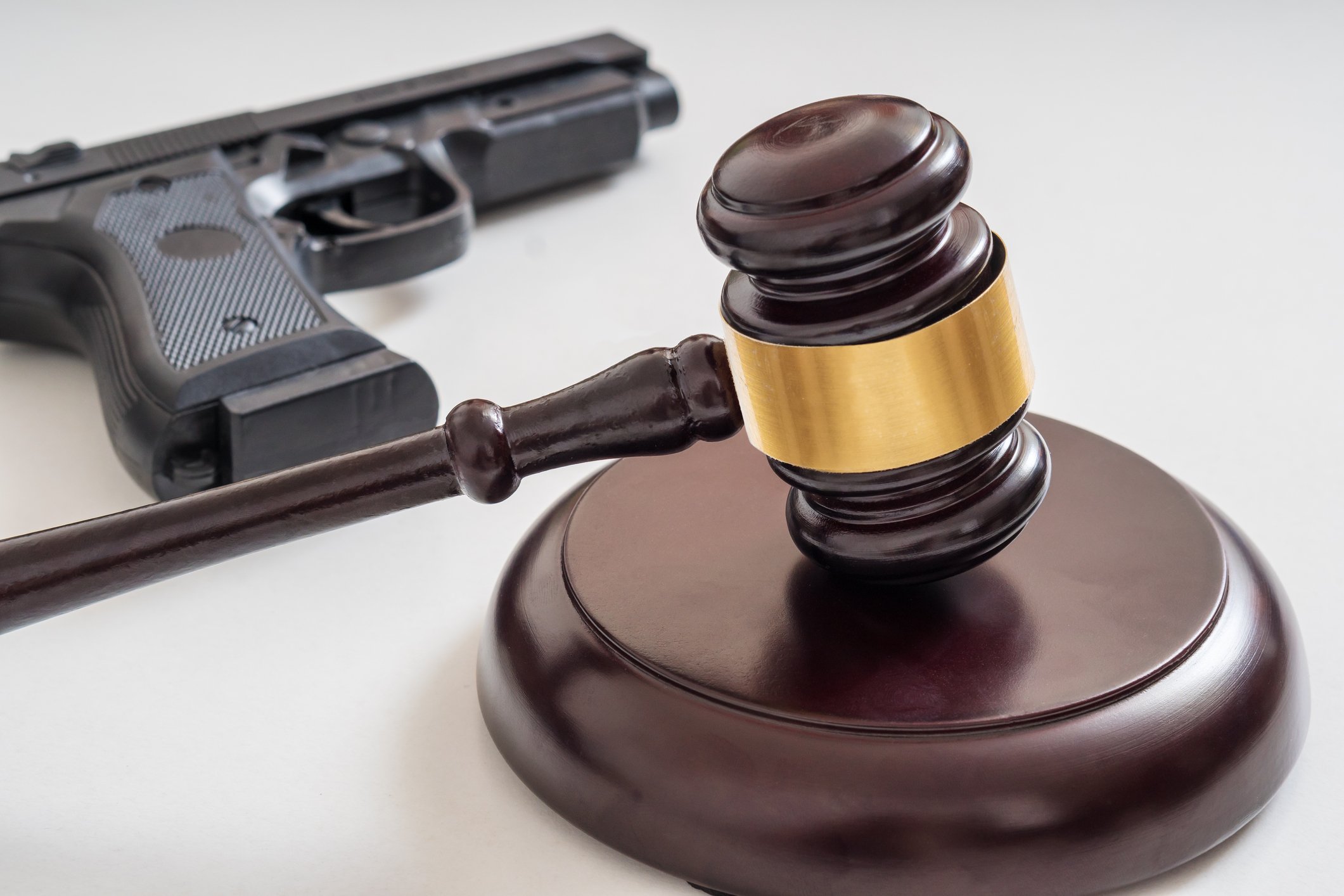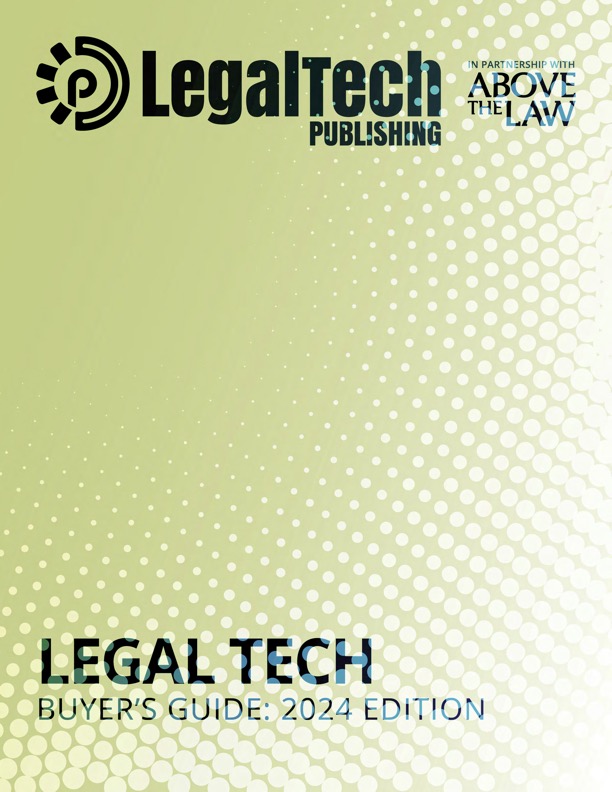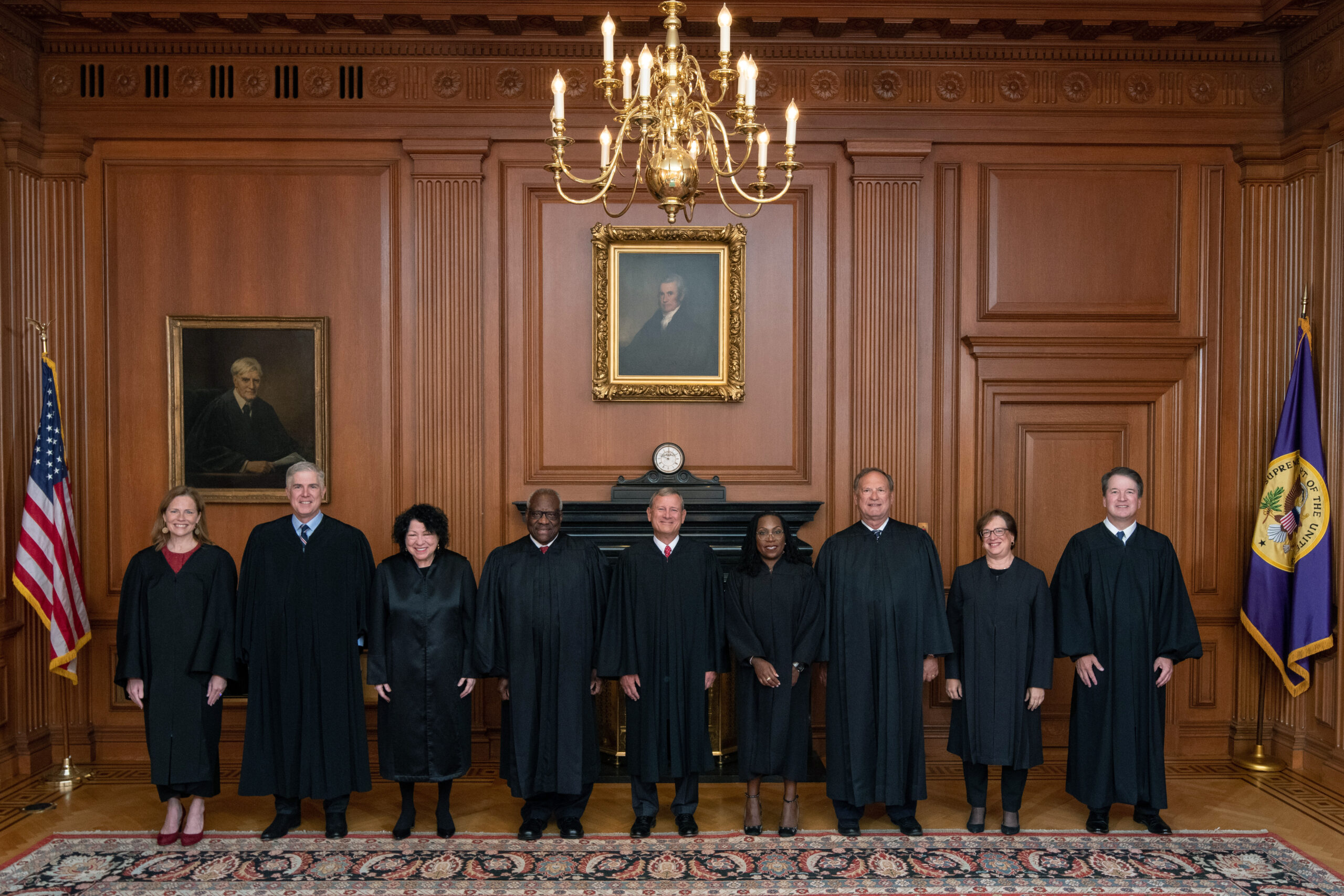This post summarizes published criminal law and related cases released by the Fourth Circuit Court of Appeals during August of 2024. Cases of potential interest to state practitioners are summarized monthly. Previous summaries of Fourth Circuit cases are available here.
Door opening in response to knocking did not constitute implied consent to enter without a warrant; decedent’s act of pointing a rifle at officer justified use of deadly force, but the circumstances of the shooting of the decedent’s girlfriend were unclear; dismissal of warrantless entry claims reversed; dismissal of excessive force claims reversed in part
Quinn v. Zerkle, 111 F.4th 281 (Aug. 1, 2024). Early one morning, the decedent was involved in a high-speed chase with a West Virginia State Trooper. The decedent managed to make it home, where his girlfriend was inside sleeping. The trooper arrived within minutes and was soon joined by local county deputies. They surrounded the home and knocked on the front door without receiving an answer. After loudly announcing their presence several times while continuing to knock and threatening to release a K-9 inside, the door swung open. The deputies went inside the home. In response, the decedent broke his bedroom window and jumped outside onto the ground while holding an AR-15 rifle. He pointed it at a nearby deputy and was immediately shot and killed by that deputy and the trooper. His girlfriend—who followed him out of the window—was also shot at or near the same time.
The girlfriend and the man’s estate sued in the Southern District of West Virginia, alleging Fourth Amendment violations based on the warrantless entry into the home and excessive force (among other claims). After discovery, the defendants moved for summary judgment. The district court granted the motion, finding that the officers reasonably interpreted the door opening as consent to enter the home. Alternatively, the district court held that the officers would be entitled to qualified immunity regarding the entry, because it was not clearly established that the officers should have interpreted the opening of the door as something other than implied consent to enter. As to the excessive force claims, the district court found that the officers did not use excessive force when they shot the decedent in response to his pointing a rifle at them and that no constitutional violation occurred. In regard to the girlfriend’s excessive force claim, there was no credible evidence that the officers intended to hit her. Because her injuries were an accidental effect of the reasonable force the officers used against the decedent, her excessive force claim also failed.
The Fourth Circuit reversed on the warrantless entry claims as to both plaintiffs and reversed on the excessive force claim as to the girlfriend only. Consent to enter a premise must be knowingly and voluntarily given based on the totality of circumstances. Trulock v. Freeh, 275 F.3d 391, 401 (4th Cir. 2001). Here, the officers interpreted the door opening after repeated knocking as consent to enter, before ever interacting with anyone inside the home. This was inconsistent with the Fourth Amendment. “Under the Kanawha Deputies’ theory, any officer would be authorized to enter a person’s home simply because the door opened after an officer knocked.” Quinn Slip op. at 12. Even if an occupant had opened the door in response to the deputies’ knocking, any consent could not be implied before interacting with an occupant. Further, the deputies here threatened to release a K-9 inside the home and stated “he will bite.” Taking the facts and inferences in the light most favorable to the plaintiff, a reasonable jury could find that the officers unlawfully entered the home, and the district court erred in concluding otherwise.
The deputies were not entitled to qualified immunity on these claims, because it was clearly established law that “implied consent must be based on inferences an officer draws from the conduct of someone at least presumed to have the ability to authorize consent.” Id. at 19. Here, not only did the officer have any conduct from which to make such inferences, but even presuming an occupant had opened the door, he or she may have done so under duress in response to the officer’s threat to release a police canine inside. “It is also well-settled that consent is not voluntary when it is the product of duress.” Id.
The district court correctly determined that no reasonable jury could find that the officers used excessive force against the decedent. “Fatal to [the estate’s] claim, the Estate’s interpretation of the record is belied by Cpl. Whittington’s body cam footage, which shows [the decedent] on the ground pointing an AR-15 in Cpl. Whittington’s direction.” Id. at 22. Whether the deputies accidentally shot the girlfriend while defending themselves, however, was a question for the jury. If the girlfriend was only injured as an unintended consequence of the deputies’ defending themselves from the decedent, they could not be liable for her injuries. It was not clear at what point the woman was shot as she exited the window and fell to the ground, and it was possible that the deputy intentionally aimed at her. If so, he may have used excessive force in violation of the Fourth Amendment.
The case was therefore reversed in part, affirmed in part, and remanded for further proceedings.
Evidentiary hearing was needed to determine whether defendant consented to defense lawyer’s concession of guilt; summary denial of habeas petition reversed
U.S. v. Hashimi, 110 F.4th 621 (Aug. 2, 2024). The defendant was indicted in the Eastern District of Virginia for drug distribution, assault, and kidnapping offenses. Prior to trial, the defendant repeatedly complained about his court-appointed lawyer, alleging that the lawyer failed to properly communicate with him and had interfered with his ability to obtain an acceptable plea bargain. According to the lawyer, the defendant rejected multiple plea offers. The district court refused to remove defense counsel, and the matter proceeded to trial. After the evidence was presented, defense counsel proposed to plead guilty to the kidnapping and assault crimes only, while allowing the drug offenses to be decided by the jury. The government objected, and the district court ultimately sent the entire case to the jury. The defendant did not personally indicate a preference to plead guilty to some or all of the charges. During closing argument, the defense lawyer conceded to the jury that the defendant was guilty of the kidnapping and assault charges, while contesting the strength of the evidence in support of the drug charges. The jury convicted on all counts, and the defendant was sentenced to 300 months.
In his first appeal of the case, the defendant alleged that he received ineffective assistance of counsel based on the lawyer’s concession of guilt. The Fourth Circuit disagreed, finding that the decision could have been a reasonable tactical decision and declining to decide the question of effective assistance on direct review. Shortly after that decision, the U.S. Supreme Court decided McCoy v. Louisiana, 584 U.S. 414 (2018), which held that defense counsel may not concede a defendant’s guilt over his objection and established a Sixth Amendment right to a defendant’s autonomy in the conduct of his defense. The Supreme Court held that the violation of this right is a structural error, requiring reversal without regard to prejudice. Following McCoy, the Supreme Court granted the defendant’s petition for certiorari and vacated the earlier Fourth Circuit decision, remanding the case for reconsideration. On remand, the Fourth Circuit again found that the cold record did not establish whether the defendant consented to the admission of guilt and directed the defendant to pursue the claim in habeas proceedings. The defendant did so, leading to the present matter. In support of his claim, the defendant submitted a sworn declaration stating that his lawyer failed to meaningfully consult with him about the case prior to trial and swearing that he never gave his lawyer permission to concede guilt to the kidnapping and assault offenses. He also submitted handwritten notes that he and defense counsel had passed to each other during the victim’s testimony. The notes indicated disagreement between the defendant and lawyer regarding whether the defendant should have pled guilty (as the lawyer had recommended). According to the defendant, this showed that defense counsel wished to concede guilt over his objection.
The district court denied the petition without conducting a hearing, pointing to Florida v. Nixon, 543 U.S. 175 (2004). Nixon held that defense counsel may reasonably decide to admit guilt when a defendant refuses to indicate whether he is willing to accept such a strategic admission. The district court found this situation was more akin to the silent defendant in Nixon than the defendant in McCoy, who strenuously objected to his lawyer’s admission of guilt. There was no indication that the defendant here ever objected to the strategy, and this, according to the district court, meant his McCoy claim failed.
On appeal of that decision, the Fourth Circuit reversed. The defendant was entitled to an evidentiary hearing on the issue and the district court erred in summarily dismissing the petition. While “trial management” decisions are within the lawyer’s purview, the decision to admit guilt is one of the defendant’s “fundamental” trial rights. Hashimi Slip op. at 9. In no instance may a lawyer override the client’s wish to contest the case by asserting his or her innocence, even when the lawyer strongly disagrees, and the lawyer may not admit guilt without the client’s permission. Taking the facts in the light most favorable to the petitioner, it was possible that the defense lawyer violated that principle here, and an evidentiary hearing was needed to determine the issue. Nixon was not controlling here, because it was not the defendant who was required to object to the admission of guilt; it was the defense lawyer’s obligation to confer with the defendant before making the admission (as the defense lawyer in Nixon repeatedly did). “Put differently, McCoy is not satisfied if a defendant fails to object because he was never given the opportunity to object. Were it otherwise, this loophole would swallow the McCoy rule . . .” Id. at 14.
The district court’s order was therefore vacated, and the matter was remanded to district court for hearing.
Reasonable jury could conclude that officers lacked probable cause to arrest; grand jury indictment did not establish probable cause where there was evidence that officers misled the prosecution and withheld exculpatory information; no qualified immunity for deliberate withholding of evidence; fabrication of evidence claim was not barred by dismissal of criminal charges
Harris v. Town of Southern Pines, 110 F.4th 633 (Aug. 5, 2024). Officers in Southern Pines, North Carolina, were investigating drug trafficking by a local group known as the “Dope Boy Clic” or “DBC.” One of the members of the group was Leon Harris, Jr. Police learned Harris, Jr. was the leader of the group and helped operate a drug house in town. They also learned that he stored drugs in Aberdeen, NC. GPS tracking devices showed that Harris, Jr. sometimes drove to the stash location or the drug house from his father’s house in Southern Pines, and vice versa. An officer once saw Harris, Jr. drive from the stash location to Harris, Sr.’s house, walk to the rear of the residence, and disappear for a few minutes. He then left a few minutes later and drove to the drug house to deliver drugs and conduct a sale. Officers placed Harris, Sr.’s house under surveillance.
Harris, Sr. lived with his wife in the Southern Pines home. He is a local minister, disabled veteran, local criminal justice advocate, and had previously formally complained about one of the officers involved in the search. Harris, Jr. lived in Charlotte but often stayed with his parents when he was in town. Officers eventually got a search warrant for Harris Sr.’s home. Harris, Sr. was the only occupant present and was detained and interrogated. According to the plaintiff (Harris, Sr.), police told him that he would be charged and taken into custody if he failed to cooperate. Harris, Sr. told police his son had not been home in months, which police knew to be false. A covered Cadillac was parked in the yard and a drug dog alerted on the vehicle. When an officer removed the cover, he saw what he believed was cocaine and immediately smelled cocaine upon opening the car. The car contained 88 grams of powder cocaine, 13 grams of cocaine base, digital scales, and a baggie wrapped in plastic. The cocaine was packaged similarly to other cocaine that had been found in the home of Harris, Jr.’s supplier. The officers then arrested Harris, Sr. for cocaine offenses. He spent five months in custody before federal prosecutors dismissed the charges.
After his charges were dismissed, Harris, Sr. sued the officers and the Town of Southern Pines for Fourth and Fourteenth Amendment violations in the Middle District of North Carolina, claiming malicious prosecution and fabrication of evidence. The district court granted summary judgment to the defendants, and Harris, Sr. appealed. A divided Fourth Circuit reversed.
Police knew Harris, Sr. had once had an interaction with a member of the drug operation in front of the Southern Pines drug house. Harris, Sr.’s mother-in-law lived next door to the drug house and surveillance showed Harris, Sr. parking to the left of the drug house and walking toward his mother-in-law’s home. Other video showed one of the members of the drug distribution ring parking at the drug house in a truck with a trailer attached full of car washing supplies. Someone moved Harris Sr.’s truck past the drug house, followed by the car with the car washing trailer. Harris, Sr. could then be seen walking from the direction of his mother-in-law’s home and standing in front of the drug house to talk with the man driving the truck with the car washing supplies. The men spoke for a bit and then walked off together towards Harris Sr.’s truck (which was not on screen). Soon after, Harris, Sr. gave the man some cash, and Harris Sr.’s truck moved back into view, obviously having been washed. Although this took place in broad daylight, police categorized the incident as “a suspicious hand to hand transaction at the DBC drug house with a known drug dealer.” Harris Slip op. at 8. Other surveillance of Harris Sr.’s home showed Harris, Jr. coming and going from the home and either dropping or picking up unknown items around near the wood line, a trailer on the property, and the Cadillac. This was the sum of the evidence against Harris, Sr. His son, Harris, Jr., later pleaded guilty to drug distribution charges.
To support his malicious prosecution claim, Harris, Sr. needed to show that police charged him without probable cause and that the criminal case ended in his favor. Durham v. Horner, 690 F.3d 183, 188 (4th Cir. 2012). Whether probable cause existed turns on what the officers knew or reasonably believed at the time that they brought charges. Michigan v. DeFillippo, 443 U.S. 31, 37 (1979). The district court ruled that the hand-to-hand cash transaction with Harris, Sr. and the man involved in the drug ring in front of the drug house was proof that the officers reasonably believed Harris, Sr. was involved in the conspiracy. This was improper, as the facts were in dispute on this critical issue. Harris, Sr. pointed out that the officers knew his mother-in-law lived next to the drug house, and the videos, taken in the light most favorable to the plaintiff, showed he most likely paid the man in front of the drug house for a car wash. Further, the officers never mentioned this interaction in any of the search warrant affidavits or to the magistrate at Harris, Sr.’s detention hearing—they only raised it after Harris, Sr. filed a civil suit. In the words of the court:
From this, a jury could conclude that even the officers themselves did not think that the video showed a drug transaction that would have supported a finding of probable cause. Instead, the officers’ silence about this interaction throughout the criminal proceedings strongly suggests that, at the time, they understood the payment for what it was: payment for car washing services rendered. Harris Slip op. at 14-15.
Likewise, the significance of the presence of the drugs found on Harris, Sr.’s property did not so clearly establish probable cause as to defeat the malicious prosecution claim. Harris, Sr. was never seen near the car. While he had the keys to the car, it was registered to him, and he knew which of the car doors worked, the drugs were hidden under a cover and the car was parked out in the yard out of sight from the residence. There was no evidence suggesting the drug operation was running out of Harris, Sr.’s home or that he had knowledge of the drugs in the car. “While one can make that assumption about drugs in plain view in the defendant’s kitchen, the assumption does not hold as to an out-of-view vehicle in the yard.” Id. at 18. Even coupled with the video evidence, a jury could conclude that the officers lacked probable cause, and the district court erred in concluding otherwise.
Harris, Sr. was indicted by both state and federal juries. An indictment is frequently conclusive proof of probable cause, but an exception to the general rule exists when officers “mislead or pressure the prosecution.” Id. at 19 (citation omitted). According to the plaintiff, the officers here withheld the fact that they knew Harris, Jr. was a drug distributor; that Harris, Jr. had been seen at the Cadillac; that the cocaine found was packaged identically to the cocaine found at Harris, Jr.’s supplier; and that the Cadillac was immobile when seeking charges against Harris, Sr. Because there was evidence here that the officers withheld this relevant information until after Harris, Sr.’s federal indictment, the fact of the grand juries’ indictments could not shield the officers from liability for the malicious prosecution claim.
The district court had ruled that even if the officers lacked probable cause, they were protected by qualified immunity. This too was error. “[I]t defies common sense to say that an officer is entitled to qualified immunity when the allegedly unconstitutional conduct is deliberately withholding exculpatory evidence from prosecutors until after a suspect is indicted.” Id. at 22. This was clearly established at the time. The dismissal of the malicious prosecution claims against the officers was therefore reversed and remanded for additional proceedings.
As to the Fourteenth Amendment fabrication of evidence claim, the plaintiff must show that officers manufactured or withheld material evidence, and that the plaintiff suffered a deprivation of liberty as a result. Unlike the malicious prosecution claim, a fabrication of evidence claim is not defeated by the existence of probable cause. The district court here dismissed the claim based on the fact that the criminal charges were dropped, and that the plaintiff only suffered pretrial incarceration. The district court believed that claims stemming from pretrial incarceration were only available under the Fourth Amendment, not the Fourteenth. While the Fourth Circuit has never squarely decided whether a Fourteenth Amendment fabrication of evidence claim is available to plaintiff who was never convicted, several circuits have so held, and the court agreed with those sister circuits. In its words:
If the initiation of criminal proceedings rests on fabricated evidence that harm [of corrupting the criminal process] has occurred. It does not matter whether the defendant is subsequently detained or whether there is probable cause; if the officers fabricate evidence, that harm has occurred. Id. at 27.
The dismissal of this claim was also reversed and remanded for the district court to determine whether there was sufficient evidence of fabrication to survive summary judgment.
The district court was affirmed as to a state tort claim on malicious prosecution and on the claims against the Town of Southern Pines, because the plaintiff abandoned his arguments about those issues on appeal.
Judge Rushing dissented and would have affirmed the district court in all respects.
Divided en banc court holds the federal ban on possession of firearms with altered or destroyed serial numbers is not facially unconstitutional under the Second Amendment
U.S. v. Price, 111 F.4th 392 (Aug. 6, 2024). In this case from the Southern District of West Virginia, the defendant was charged with possession of firearm by felon and possession of a firearm with a destroyed serial number. He moved to dismiss both charges, arguing those statutes were facially unconstitutional under the Second Amendment. The district court denied the motion as to the firearm by felon charge but granted it to the serial number offense, finding that there was no comparable historical regulation to that restriction under New York Rife & Pistol Association v. Bruen, 597 U.S. 1 (2022). The government appealed, and, sitting en banc, a majority of the Fourth Circuit reversed.
18 U.S.C. 922(k) prohibits possession of a firearm with an altered, destroyed, or obliterated serial number. Under Bruen, when a regulation or law implicates conduct protected by the Second Amendment, the government must justify the regulation by reference to a comparable historical tradition of gun regulation. In U.S. v. Rahimi, 144 S.Ct. 1889, 1898 (2024), the Court refined that test by holding that “the appropriate analysis involves considering whether the challenged regulation is consistent with the principles that underpin our regulatory tradition.” The conduct at issue here was unprotected by the Second Amendment, and the defendant’s challenge failed at the first step of the analysis. In District of Columbia v. Heller, 554 U.S. 570, 625 (2008), the Court explained that weapons not typically possessed by “law abiding citizens for lawful purposes” are not protected by the Second Amendment. “Dangerous and unusual weapons” fall outside the right to keep and bear arms. Id. at 627. A weapon without identifying information like a serial number, is not a weapon commonly used for legal purposes. While normal handguns are “the quintessential self-defense weapon,” the type of weapon is not necessarily determinative—the purpose for which the weapon is typically used is also factor. Heller at 629. “[W]hile historical tradition regarding the regulation of dangerous weapons supports a limitation on the scope of the Second Amendment right, a weapon must be in common use for a lawful purpose to be protected by that right.” Price Slip op. at 20 (emphasis in original).
Not only are firearms without legible serial number unlikely to be used for lawful purposes, they are also extremely uncommon, with the Bureau of Alcohol, Tobacco, and Firearms estimating that around 3% of firearms in possession of law enforcement agencies had a serial number that had been destroyed. While a law-abiding citizen could theoretically remove the serial number on a weapon without nefarious intent (as the district court speculated), such conduct would nonetheless fall outside of the protection of the Second Amendment as an uncommon weapon without a typically lawful purpose. “Firearms that are originally lawfully purchased are not somehow imbued with constitutional coverage no matter what happens after they leave the dealer.” Id. at 24.
The district court’s partial grant of the defendant’s motion to dismiss was therefore reversed and the matter remanded for additional proceedings.
Judge Niemeyer concurred in judgment separately. While he fully agreed with the majority’s opinion, he faulted its analysis. According to Judge Niemeyer, the majority improperly inserted the historical analysis required by Bruen into the first step of the analysis (whether the regulation affects conduct protected by the Second Amendment), instead of conducting the historical analysis at step two (whether the regulation is consistent with principles undergirding historical firearm regulations).
Judge Agee also concurred separately in judgment. He agreed with the result but would have resolved the case on the basis that 18 U.S.C. 922(k) could be constitutionally applied to the defendant as a convicted felon, and that this alone defeated the defendant’s Second Amendment challenge.
Judge Quattlebaum, joined by Judge Rushing, also concurred in judgment in a separate opinion. They believed that the majority erred by examining whether a weapon is in common use at the first step of the Bruen analysis but otherwise agreed that the statute was constitutional under the Second Amendment.
Judge Gregory dissented. He faulted the majority for misapplying Bruen and would have ruled that the statute was unconstitutional. He also noted that people of color are disproportionately affected by 18 U.S.C. 922 and that affirming the constitutionality of 922(k) would further contribute to mass incarceration.
Judge Richardson also dissented. He would have ruled that the government failed to justify the regulation and believed the district court should have been affirmed.
Where circumstances objectively indicated an armed, ongoing threat, officers were entitled to use deadly force; divided panel affirms grant of summary judgment and qualified immunity to officers
Carraway v. City of Pineville, 111 F.4th 369 (Aug. 6, 2024). Police in Pineville, North Carolina, received a report of a Black man “pointing or waving” a gun near a local restaurant. Two officers separately arrived on scene and located the plaintiff (Carraway). Each officer exited their cars with a rifle drawn. The plaintiff was facing away from the officers, walking down the street with his arms at his side. One of the officers told the plaintiff to get his hands up, and the other officer joined in with similar commands. The plaintiff looked back and noticed the officers and raised his hands above his head, holding a cell phone in one of his hands. One of the officers yelled for the plaintiff to drop his gun. In response, the plaintiff knelt down and reached into his jacket pocket, beginning to remove a gun from the pocket. The other officer yelled for the plaintiff to keep both of his hands up, and one of the officers fired. The man slumped over, and the officers shot the man several more times. One officer fired nine shots, while the other fired three. As the officers approached, they saw a gun and the cellphone on the ground next to the plaintiff. They again commanded the man to raise his hands, but he told them that he could not do so. The plaintiff also apologized and explained that he was trying to do what the officers had asked—drop his gun.
The plaintiff survived the bullet wounds and sued in the Western District of North Carolina, claiming excessive force, malicious prosecution, fabrication of evidence, failure to train or supervise, and asserting additional state tort claims. The district court granted the defendants’ motion for summary judgment, finding the use of deadly force by the officers was reasonable and not prohibited by clearly existing law at the time. It also found that the officers were entitled to either qualified immunity or public official immunity on the remaining claims. The plaintiff appealed as to his excessive force and state tort assault claim only. A divided panel of the Fourth Circuit affirmed.
The plaintiff argued on appeal that there was a genuine factual dispute over whether he pointed his gun at the officers. The evidence largely showed that the plaintiff spun around when commanded to drop his gun, reached into his pocket, and quickly began removing the gun, holding it by the pistol grip with the barrel towards an officer. While he did not raise the weapon and point it at the officers, nothing in the evidence contradicted the fact that the weapon was briefly pointed in the direction of the officers, intentionally or not. “In sum, there was no genuine issue of material fact that the gun was pointed in the direction of at least some officers.” Carraway Slip op. at 18.
The plaintiff also objected to the grant of qualified immunity. The Fourth Circuit disagreed. The officers’ actions were objectively reasonable under the circumstances. The question for purposes of qualified immunity is whether the circumstances supported a reasonable belief by the officers that the plaintiff presented a deadly threat. “That the officers saw Carraway holding a gun that they reasonably believed would be used against them was enough to justify their decision to deploy deadly force.” Id. at 22. While being armed is not by itself enough to justify the use of deadly force, being armed and threatening is, as the officers here reasonably believed Carraway was. The actions of the officers therefore did not violate the Fourth Amendment, and the grant of qualified immunity was appropriate.
Finally, the plaintiff alleged that the district court erred by failing to distinguish between the shots fired at him while he was standing from the ones that hit him after he was on the ground. The justification for the use of deadly force can dissipate in seconds when the suspect no longer poses a threat, and the plaintiff argued such was the case here. The majority again disagreed. All of the shots were fired within a three to four second window of time and it was not clear that the potential threat had abated. The trial court did not err by failing to distinguish between the different stages of the shooting.
The court also found that the state law assault and battery claims failed for the same reason, and, alternatively, that the officers were entitled to public official immunity under state law. Thus, the judgment of the district court was affirmed in all aspects.
Judge Alston, sitting by designation, dissented. He would have reversed the district court’s ruling on the excessive force claim and complained that the majority failed to view the facts in the light most favorable to the plaintiff.
No abuse of discretion to remove juror before deliberations for communicating about the case with the plaintiff; no error to give modified jury instruction that was a correct statement of law and largely tracked the pattern instruction
Hicks v. Anne Arundel County, MD, 110 F.4th 653 (Aug. 6, 2024). A detective was investigating an assault that allegedly involved three attackers: two males and one female. The victim incorrectly identified the plaintiff as the female assailant during a photo lineup. The plaintiff’s car was used by the assailants to accomplish the assault, and the detective later discovered that the assault was intended as revenge on the victim, whom the assailants suspected of breaking into the plaintiff’s home. After the detective obtained an arrest warrant for the plaintiff, new information came to light implicating a different woman as the female assailant. The detective nonetheless proceeded to arrest the plaintiff. She spent the night in jail and posted bond the next day. A grand jury indicted her for the assault, but the charges were dismissed without adjudication. The plaintiff sued the detective and the county in the District of Maryland, alleging unlawful arrest, detention, and malicious prosecution. Ultimately, the case was tried by jury on malicious prosecution and various state tort claims.
Despite having been extensively instructed not to communicate about the case, a juror approached the plaintiff during a lunch break and said, “I wish I could give you a hug.” The plaintiff’s attorney reported this improper juror contact to the court. The trial judge admonished the jury about the incident and reminded the jurors not to communicate with anyone about the case but refused to allow the attorneys to individually question the juror at issue. After the close of evidence, defense counsel again raised the issue of the juror’s misconduct and the trial court agreed, dismissing the juror over the plaintiff’s objection.
During the charge conference, the trial court proposed supplementing the pattern jury instructions with a definition of “recklessness.” The definition stated in part: “Reckless disregard can be evidenced by an officer acting with a high degree of awareness of those statements’ probable falsity.” Hicks Slip op. at 6. The plaintiff objected, arguing that the proposed definition wrongfully narrowed the scope of the word and would confuse jurors. The trial court overruled the objection and gave the modified instruction.
The jury returned a verdict in favor of the detective, finding no liability. The plaintiff moved for a new trial, based on the allegedly improper dismissal of the juror and the jury instruction issue. The district court denied the motion and the plaintiff appealed. A unanimous panel of the Fourth Circuit affirmed. Regarding the juror issue, the trial court has discretion in how it responds to juror misconduct. While some cases from other circuits have imposed a higher burden on the trial court to create a more detailed record when a juror is dismissed for failure to follow the court’s instructions after jury deliberations have begun, those cases did not control where the jury had not yet started deliberating and the misconduct related to the juror speaking to others about the case in violation of preliminary jury instructions. The court here acted within its discretion to remove the juror without allowing questioning by the parties.
Regarding the jury instruction issue, the district court used a modified pattern jury instruction for the malicious prosecution claim, with the modification being drawn from case law that spoke to the specific alleged police misconduct at issue in the case. Most of the instruction was a verbatim recitation of the pattern. It was a correct statement of law and sufficiently informed the jury of the legal principles relevant to adjudicate the claim. The trial court therefore did not err by overruling the plaintiff’s objection to the modified pattern instruction.
The district court was therefore unanimously affirmed.
Maryland state ban on possession of assault-style weapons does not violate the Second Amendment
Bianchi v. Brown, 111 F.4th 438 (Aug. 6, 2024). The State of Maryland banned the sale or possession of certain “assault weapons” in 2013. The ban applies to AR-15 rifles, AK-47 rifles, the Barrett .50 caliber sniper rifle, and a number of other rifles and pistols capable of semiautomatic fire, as well as “copycat” weapons. A person possessing such a weapon is subject to criminal charges and may be sentenced to up to three years in prison upon conviction. The law was challenged on Second Amendment grounds in 2017, and a divided Fourth Circuit upheld the law. Kolbe v. Hogan, 849 F.3d 114 (4th Cir. 2017) (en banc). In the wake of the new framework for analyzing Second Amendment claims announced in New York Rifle & Pistol Ass’n v. Bruen, 597 U.S. 1 (2022), Maryland residents, gun rights advocacy groups, and a firearms dealer in the state brought a renewed challenge to the state ban. They sought declaratory and injunctive relief, arguing that the ban was facially unconstitutional.
The district court dismissed the complaint, finding that it failed to state a claim in light of the Kolbe decision. An initial three-judge panel of the Fourth Circuit affirmed, noting its limited authority to overrule an earlier en banc decision. The appellants sought review at the U.S. Supreme Court, which granted certiorari, vacated the panel decision, and remanded for reconsideration in light of Bruen (which was decided by the Court after the en banc decision in Kolbe). Before the case was argued on remand, the Fourth Circuit voted to hear the matter en banc. Once more, a divided full court affirmed the district court.
The U.S. Supreme Court recognized an individual right to possess firearms within a residence for self-defense under the Second Amendment in District of Columbia v. Heller, 554 U.S. 570 (2008). Heller acknowledged that this right had important limits, noting that “dangerous and unusual weapons” not commonly used for lawful purposes were unprotected. Id. at 627. While the Court has held that the protections of the Second Amendment extend to modern-day weapons and are not limited to weapons of the kind that existed at the time of the founding, the Court has not clearly defined what weapons can fairly be considered “dangerous and unusual” for purposes of Second Amendment law.
Under New York Rifle & Pistol Ass’n v. Bruen, 597 U.S. 1 (2022), a court faced with a Second Amendment challenge must first determine whether the regulation at issue affects conduct protected by the text of the Second Amendment. When the regulation impacts conduct covered by the Amendment, the government has the burden to justify the regulation by “demonstrating that it is consistent with the Nation’s historical tradition of firearm regulation.” Id. at 24. If the conduct is consistent with the national historical tradition of gun regulation, the regulation is constitutional; if it is not, the regulation violates the Second Amendment and cannot stand.
According to the majority, the plaintiffs here had a heavy burden to demonstrate that the law is facially unconstitutional (that is, the law cannot be applied constitutionally to any set of facts). The weapons regulated by the Maryland law are “dangerous and unusual weapons” not commonly used for self-defense and therefore are outside the protections of the Second Amendment. Many of the weapons covered by the ban are primarily used in military combat, such as the .50 cal. sniper rifle and shotguns with high-capacity magazines.
The court discussed the AR-15 rifle separately, as it is the “paradigmatic semiautomatic rifle targeted by ‘assault weapon’ laws.” Bianchi Slip op. at 27. AR-15 rifles are the civilian version of the M16 automatic rifle used by the military. Both versions of the weapons are equipped with “combat-functional features,” such as flash suppressors, pistol grips, and detachable high-capacity ammunition magazines (among other similar features). The rifle fires bullets at approximately three times the velocity of most handguns and is designed to inflict maximal damage to a target. This includes the ability to pierce body armor and other protective combat gear. The weapon also has extremely low recoil, which allows a shooter to quickly fire multiple shots with little disruption. “Between its firepower, accuracy, and modifiability, the ‘net effect’ of the AR-15’s ‘military combat features is a capacity for lethality.’ All of this is far cry from any notion of civilian self-defense.” Id. at 32 (citation omitted). AR-15s are used in around 25% of mass shootings in the country and have been used in between 13% and 20% of fatal shootings of law enforcement officers, which is further evidence of their dangerousness. Aside from their dangerousness, AR-15s are not well suited for self-defense in or outside of a home. While these rifles are unquestionably “common” in America, they are not commonly used for self-defense. The dissent’s suggestion that the Second Amendment protects AR-15s because they are popular among civilians would mean that the government could never ban dangerous weapons that were popular before they could be appropriately regulated. “We decline to hold that arms manufacturers can secure constitutional immunity for their products so long as they distribute a sufficient quantity before legislatures can react.” Id. at 41.
Regulation of the types of weapons covered by Maryland’s ban is also consistent with national historic tradition. The ban here is responsive to a widespread and ongoing societal harm—mass shootings—and comparable legislation existed at and near the time of the founding to respond to such societal ills. Many jurisdictions restricted the amount of gunpowder that an individual could store, in recognition of its lethality if inadvertently ignited. Legislatures also banned the carrying of concealed weapons in many places as well as the brandishing of weapons, and sometimes banned weapons outright that were popular with criminals, such as sword canes, sand clubs, and metal knuckles. In the words of the court:
In sum, then, 18th and 19th century legislatures ‘passed laws in a number of states that restricted the use or ownership of certain types of weapons,’ once it ‘became obvious that those weapons . . . were being used in crime by people who carried them concealed on their persons and were thus contributing to rising crime rates. Id. at 56.
Similar restrictions were passed in response to evolving weapons technology, such as laws banning possession of Tommy guns and dynamite. Federalism concerns about the ability of states to experiment with policy choices of their own were also a relevant consideration in the analysis. “Whether these laws were wise or effective is surely a matter of debate. The point is, however, that legislatures were not disabled constitutionally from enacting them.” Id. at 61. A majority of the Fourth Circuit therefore held that Maryland’s “assault weapons” ban was “plainly a constitutional enactment.” Id. at 65.
Chief Judge Diaz penned a separate concurrence, joined by Judges King, Wynn, Thacker, Benjamin, and Berner. His opinion focused on the analytical difficulty Bruen imposed on trial courts.
Judge Gregory also wrote separately to concur in judgment. He objected that the majority opinion went beyond historical analysis required by Bruen and improperly inserted safety concerns into the equation. He nonetheless agreed that the challenged law was consistent with historical regulation of weapons and agreed with the outcome.
Judge Richardson dissented, joined by Judges Niemeyer, Agee, Quattlebaum, and Rushing. They would have struck down Maryland’s law as violative of the Second Amendment.
North Carolina sex offender registration laws have a civil, nonpunitive purpose and effect and retroactive application of amendments to the statutes does not violate the Ex Post Facto Clause
National Assoc. for Rational Sexual Offense Laws v. Stein, 112 F.4th 196 (Aug. 9, 2024). The plaintiffs sued in the Middle District of North Carolina, arguing that the state’s sex offender registration laws violated the Ex Post Facto Clause and seeking to enjoin the State from retroactively applying certain amendments of the laws to registered offenders. The district court ruled against the plaintiffs, and they appealed. The Fourth Circuit affirmed. Under Smith v. Doe, 538 U.S. 84 (2003), the Ex Post Facto Clause bars retroactive application of a new punishment to a crime already committed. Whether a law constitutes punishment turns on the intent of the legislature in passing it. If the law was intended as punishment, the Clause applies. If the law is intended as a civil, regulatory measure, then ex post facto protections only apply if the challenger can show that the law is “so punitive either in purpose or effect as to negate the State’s intention to deem it civil.” Id. at 92. Only the “clearest proof” will be sufficient to show punitive effect or purpose when the legislature has indicated their intention to create a civil measure.
North Carolina’s sex offender registration laws are explicitly designated as intended to promote public safety and welfare and to protect communities. “These express statements indicate that the legislature intended the registry to be a civil, nonpunitive scheme.” Stein Slip op. at 8-9. That the laws had been amended over time did not change the analysis, as the expressed legislative intent applied to the entire Article establishing the sex offender laws. The fact that law enforcement is typically tasked with enforcement of these laws, or that the laws are found within the criminal law chapter of the North Carolina General Statutes, also did not change the analysis about whether the laws were intended as a civil versus punitive measure. That offenders are typically ordered on the registry and become subject to the registry rules by way of a judgment in a criminal case was simply an efficient way of informing defendants of the civil consequences attendant to their convictions. “In sum, we take the legislature at its express word that it intended to create a civil, nonpunitive regime.” Id. at 13. Moving to the second part of the analysis, the court balances five factors in determining whether the statutory scheme is punitive in fact by considering whether it:
(1) has a rational connection to a nonpunitive purpose; (2) is excessive with respect to its purposes; (3) has been regarded in our history and traditions as punishment; (4) imposes an affirmative disability or restraint; and (5) promotes the traditional aims of punishment. Id. at 13 (internal citation omitted).
While the plaintiffs here brought forward some evidence of disability imposed by the registration laws and some evidence that the scheme has punitive goals in part, the most significant factor in the analysis—a rational connection to a nonpunitive purpose—and the remaining factors all favored interpreting the statutes as nonpunitive. This failed to meet the “clearest evidence” standard. As such, the ex post facto challenge could not succeed, and the judgment of the district court was unanimously affirmed.
Reasonable suspicion existed to support stop, frisk, and extension of stop
U.S. v. Brown, ___ F.4th ___; 2024 WL 3838738 (Aug. 16, 2024). Local law enforcement in the Eastern District of Virginia noticed a video on Instagram that was posted by a person known to police to be involved in gangs. The video showed six people waving a variety of guns and making gang signs in front of a local apartment building, with the defendant among the group (but not possessing a weapon himself). The video was posted an hour or two before the officers noticed it. The officers were able to identify the defendant, Brown, on the video and noted that he was wearing a purple hooded coat and had dreadlocks. They also identified another person of interest, McCullers, who was wearing a black Chicago Bulls cap and whose distinctive boxer shorts were visible. The officers were able to tune into the apartment complex’s live surveillance cameras and saw the defendant standing with McCullers in the same area, who was holding a drum ammunition magazine. The officers headed to the apartment building, arriving around 10-15 minutes later. The same two men were still in front of the building. When officers tried to approach them, the two men began walking away and up nearby stairs of the building next door. One of the officers asked them to stop, which the men ignored. As the defendant reached the first platform on the stairs, he moved his hands towards his mid-section while his back was to the officer. The officer told him to “stop reaching,” and the defendant complied. He was handcuffed, and the officer began a pat-down, but stopped before completing it when the defendant told the officer that he had a colostomy bag.
Another officer had followed McCullers to the third floor and detained him. During a frisk, the officer found a gun on McCullers. When asked, McCullers admitted he was a felon. The first officer contacted another officer to run Brown’s info. This took 29 minutes to accomplish, with the contacted officer taking nine minutes to get to his patrol car and another 20 minutes to complete background checks. The officers were ultimately prepared to let Brown go when they noticed a bulge in his pants. The item was a gun, and the officers discovered that, like McCullers, the defendant was a felon. Both men were arrested and charged with firearm by felon. They moved to suppress. The district court denied the motions and both men pled guilty, reserving the right to appeal the denial of the motion.
On joint appeal, the men argued that the officers lacked reasonable suspicion to conduct the initial stop, lacked justification for the frisk of McCullers, and unreasonably extended the stop of Brown. A divided panel of the Fourth Circuit rejected each argument. The district court noted that Virginia state law prohibits brandishing a firearm, which at least one of the men was seen doing on video. The court also specifically found that the defendant was a known gang member, and that the area was known for violent gang activity. It was thus reasonable for the officers to think that the video was a message aimed at opposition gangs. While the video was not dated, the officers had a reasonable belief that it was posted within a short time of its creation since the live surveillance footage from the apartment showed the men in the same place as the Instagram video. “Considering the public interest in addressing what an officer could reasonably suspect was gang-related brandishing in a densely populated residential area, it was not unreasonable for the officers to investigate.” Brown Slip op. at 9. Assuming arguendo that the officers lacked reasonable suspicion based on these factors, the evasive conduct of the men when the officers arrived on scene supplied any missing justification to support reasonable suspicion for the stop.
The frisk of McCullers was similarly supported by reasonable suspicion on these facts, for many of the same reasons. The officers reasonably believed the Instagram video, which showed McCullers with weapons, depicted recent events. It was reasonable to think that he still possessed the weapon seen in the video and on the apartment building surveillance tape, and the officers’ belief that McCullers was armed and dangerous was therefore fully justified.
Finally, the defendant’s stop was not unduly extended. Forty-six minutes passed from the time of the initial seizure of the defendant and the point at which his gun was discovered. Much of that time was spent performing background and warrant checks on the defendant. That some of the time was attributable to the officers’ investigation of McCullers did not render the extension of the stop unreasonable. “[A] suspect may reasonably be detained while both he and his associates are being investigated.” Id. at 12. Additional time was spent performing a sweep of the area where the men had been to look for any discarded weapons. Given the mission of the stop, the officers acted reasonably in their investigation and detention of the defendant.
The judgment of the district court was affirmed.
Judge Wynn dissented. He argued that the activity observed on the Instagram video was presumptively protected by the Second Amendment, as the state has “open carry” gun laws. He also complained that when the officers arrived on scene, nothing corroborated their suspicion of criminal activity to support the stops and noted that the defendant was never seen holding a gun on video.
En banc majority finds Maryland’s handgun licensing qualification scheme does not implicate conduct protected by the Second Amendment and is constitutional under Bruen
Maryland Shall Issue, Inc. v. Moore, ____ F.4th ___; 2024 WL 3908548 (Aug. 23, 2024). Maryland law requires a license to obtain a handgun. If a person meets the statutory requirements, the handgun license “shall issue,” unlike the discretionary “may issue” statutory scheme challenged in New York Rifle and Pistol Ass’n v. Bruen, 597 U.S. 1 (2022). Under Bruen, a court assessing a Second Amendment challenge must first determine whether the challenged regulation infringes upon conduct protected by the amendment, and, if so, whether the challenged regulation is consistent with the nation’s historical tradition of firearms regulations. The Maryland state law requires that a licensee be at least 21 years old, be a resident of the state, complete a gun safety class, and not otherwise be barred from possessing a firearm under state or federal law. The prospective licensee must also submit fingerprints and pay a $50 application fee. Permits applications are processed within 30 days by state authorities.
The plaintiffs challenged the state handgun qualification licensing scheme as a Second Amendment violation in the District of Maryland. They previously brought this challenge pre-Bruen without success but renewed their arguments in this case under the new analytical framework established by Bruen in 2022. A divided en banc court again determined that the law was constitutional under the Second Amendment. The U.S. Supreme Court strongly implied in Bruen that “shall issue” permit schemes were presumptively constitutional. It opined that such laws may infringe on Second Amendment rights when they operate in a manner that substantially interferes with an individual’s ability to exercise those rights, such as a “shall issue” scheme requiring payment of excessive fees or an unreasonable waiting period. Absent such factors, “non-discretionary ‘shall-issue’ licensing laws are presumptively constitutional and generally do not ‘infringe’ the Second Amendment right to keep and bear arms under step one of the Bruen framework.” Maryland Shall Issue, Inc. Slip op. at 16. Only when the plaintiff can show evidence sufficient to overcome the presumptive constitutionality of the “shall-issue” law at issue will the court proceed to the second step of the Bruen analysis.
As an initial matter, the majority rejected the idea that “shall issue” laws as referenced by Bruen referred only to permits for carrying firearms in public and not to permits to obtain a firearm. The U.S. Supreme Court has not distinguished the protections of the Second Amendment for bearing arms versus keeping arms, and the court here declined to adopt any such distinction. Turning to the merits of the case, the state law here fell within the category of presumptively constitutional “shall issue” laws recognized by the U.S. Supreme Court. Any qualifying resident can obtain a permit, and the state has no discretion to deny a person who is eligible for one. The requirements of a safety course and background check were expressly identified by Bruen as the kinds of requirements that could be constitutionally required consistent with the Second Amendment.
The plaintiffs argued that the statute infringed on their Second Amendment rights because any delay in their ability to obtain a handgun amounted to a temporary deprivation of their rights. They also argued that the 30-day period for processing permit applications was unreasonable. Finally, they argued that the state background check was unnecessary and duplicative of the separate background check required for obtaining a license to buy or transfer certain firearms.
The court first noted that the plaintiffs had brought only a facial challenge to the law, which required them to show that no application of the law was constitutional under any set of circumstances, a “much more difficult task” than an as-applied challenge. Id. at 22. Next, the court rejected the idea that any delay in obtaining a handgun constituted an infringement of Second Amendment rights such that the historical analysis at the second step the Bruen test was required. In the words of the court:
By equating ‘infringement’ with any temporary delay, the plaintiffs improperly discount the Supreme Court’s guidance that requirements such as background checks and training instruction, which necessarily occasion some delay, ordinarily will pass constitutional muster without requiring the government to justify the regulation at step two. Id. at 24 (citation omitted).
The court likewise rejected the idea that the potential for up to a 30-day delay for the state to process permit applications was so lengthy as to amount to a temporary denial of Second Amendment rights. The record evidence in the case showed that all permits in the first quarter of 2018 were processed within 15 days, and some were processed within 24 hours. Given that this was a facial challenge to the statute, the court was unwilling to find that even the longer 30-day period was so lengthy as to amount to an infringement of Second Amendment rights. “We decline to construe the Supreme Court’s reference to ‘lengthy’ processing periods as including within its scope the relatively brief application, review, and approval process of the [handgun qualification license] statute.” Id. at 25.
Regarding the argument that the process was largely duplicative of the background check required for purchases and transfers of guns, the court noted crucial differences between the two processes. While the purchase permit requires a background check, it did not require fingerprints, as the handgun permit does. The handgun permit process was designed to prevent straw purchases of handguns. “[W]hile both the [purchase permit] process and the [handgun qualification licenses] statute help ensure that an applicant is not prohibited from possessing a handgun, the [handgun qualification license] statute specifically aims to prevent individuals from using false identification to verify their eligibility to purchase a handgun.” Id. at 27. Additionally, the investigations required by each process may (and often do) occur at different times. For the handgun permit, the background investigation begins once the applicant submits fingerprints and the application. For the purchase permit, the background check occurs each time a firearm is transferred from one person to another, which is intended to identify any disqualifying circumstances that may have arisen from the time a person obtained a handgun license and the time of purchase or transfer of the weapon.
The court therefore held that the Maryland handgun license scheme did not infringe upon Second Amendment rights, and the plaintiffs lost at the first step of the Bruen analysis. “[B]ecause the plaintiffs in this case have failed to rebut the presumptive constitutionality of the ‘shall-issue’ [handgun qualification license] statute, we reject their facial constitutional challenge.” Id. at 29 (citations omitted).
The judgment of the district court was therefore affirmed.
Judge Rushing concurred in judgment separately, joined by Judge Quattlebaum and Judge Gregory. These judges believed that the majority erred in finding that the Maryland law did not infringe upon Second Amendment-protected conduct. They would have proceeded to the second step of the Bruen analysis and would have found the law passed constitutional muster because it was “consistent with the principles underlying our Nation’s historical tradition of firearm regulation.” Id. at 30.
Judge Neimeyer concurred in part, dissented in part, and concurred in judgment. He agreed that the law was facially constitutional but faulted the majority’s analysis for imposing an infringement requirement at the first step of the Bruen analysis and dissented from that part of the decision.
Judge Richardson dissented, joined by Judge Agee. The dissenting judges would have found that the law violated the Second Amendment, as they believed that the law implicated protected conduct and lacked a comparable historical analog.
#Fourth #Circuit #Court #Appeals #August #North #Carolina #Criminal #Law










